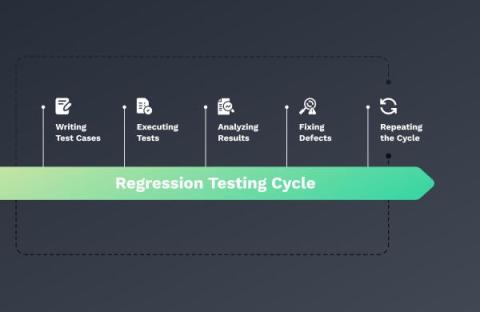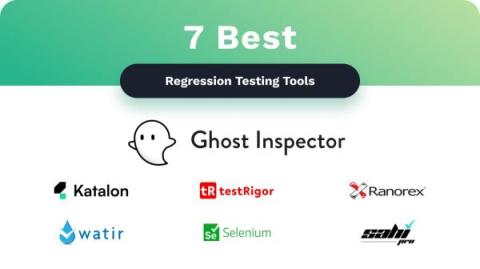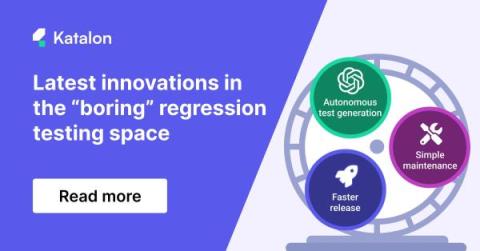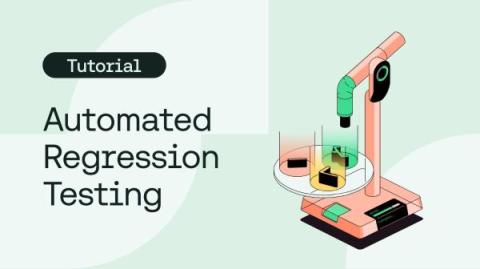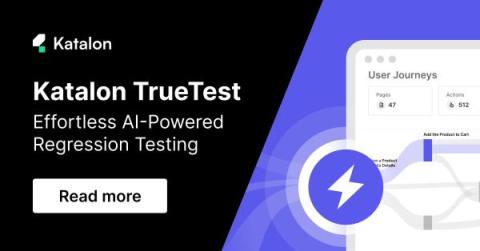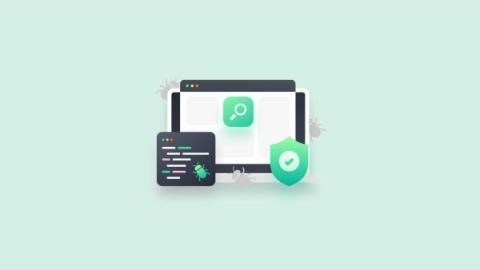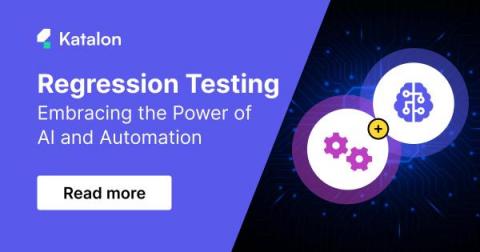Systems | Development | Analytics | API | Testing
Regression Testing
The 7 Best Regression Testing Tools in 2024
Latest Innovations In The "Boring" Regression Testing Space
Don't Forget to Regression Test Your APIs!
What Is Automated Regression Testing, and How Do You Get Started?
How To Build An Effective Regression Test Suite?
Regression testing is a must-have testing activity. A quite common best practice is to build a regression test suite consisting of many related test cases for a particular feature. This test suite is scheduled to run automatically after a code update to check if that particular feature is affected by the update. The real question is not about how to build a regression test suite, but rather, on what criteria we should categorize our test cases.
TrueTest - Effortless AI-Powered Regression Testing
Regression testing is a necessary process that grows over time, consuming larger amounts of testing capacity as applications scale in features. Katalon TrueTest™ addresses this hurdle by using artificial intelligence (AI) to allow quality engineering teams to realign their limited resources to spend more time validating and testing new release features while relying on Katalon to create, maintain, and run regression tests on existing application code.
How to Regression Test Performance | A Kubernetes Guide
With production traffic and automatic mocks, this guide shows how to regression test performance in your Kubernetes cluster.
The Fool-Proof Guide to Retesting vs Regression Testing
Because retesting and regression testing have many similarities, it’s easy to get them mixed up. Both are software testing methods used to maintain the usability of a website or web app, and both involve testing your software repeatedly. Thankfully, there are some key differences between the two that are easy to remember when learning how to distinguish one from the other. Read on for a simple breakdown of retesting vs regression testing, so you never end up confusing them again.
Regression Testing: Embracing the Power of AI and Automation
Quality assurance is a crucial differentiator in today's software marketplace. Gartner reports, "48% of software engineering leaders say customer or user satisfaction are among the top three objectives they are measured on." (Source: 2022 Gartner Software Engineering Leaders Role Survey). In essence, software quality directly influences customer satisfaction. A cornerstone in ensuring such quality is regression testing.


